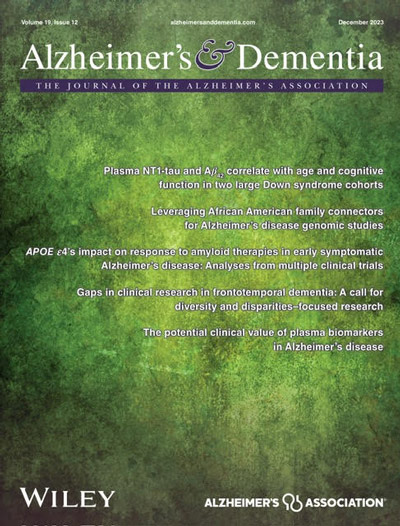Retinal microvascular alterations in Alzheimer's disease: Linking blood plasma biomarkers and cerebral small vessel pathology
Abstract
BACKGROUND
Retinal microvascular alterations, detectable via color fundus photography (CFP), may reflect cerebral microvascular pathology in Alzheimer's disease (AD). However, their associations with blood-based biomarkers and cerebral small vessel disease (SVD) remain unclear.
METHODS
This cross-sectional study included 72 AD patients and 82 cognitively unimpaired (CU) controls. Participants underwent CFP, plasma biomarker analysis (amyloid beta [Aβ]42, Aβ42/40, phosphorylated tau [p-tau]181, p-tau217), and 3T magnetic resonance imaging. Retinal microvascular metrics (vessel density [VD], fractal dimension [FD]) were analyzed alongside SVD markers (white matter hyperintensities [WMHs], SVD burden) and medial temporal lobe atrophy (MTA).
RESULTS
AD patients exhibited significantly reduced VD and FD compared to CU (all p < 0.001), with strong diagnostic accuracy (area under the curve: 0.969 for VD; 0.904 for FD). Retinal microvascular impairment correlated with plasma biomarkers (lower Aβ42, Aβ42/40; elevated p-tau181, p-tau217; all p < 0.05) and neuroimaging markers of SVD (WMHs, MTA; all p < 0.05). Apolipoprotein E ε4 carriers showed more severe retinal microvascular damage (p < 0.001).
DISCUSSION
Retinal microvascular alterations, assayed via CFP, are linked to AD-specific proteinopathy and cerebrovascular pathology, supporting CFP as a scalable, non-invasive tool for AD biomarker discovery.
Highlights
- Retinal microvasculature assayed via color fundus photography (CFP) is sensitive to microvascular damage and can differentiate Alzheimer's disease (AD) from cognitively unimpaired controls.
- Retinal microvascular damage in AD is associated with phosphorylated tau [p-tau]181, p-tau217, p-tau217/amyloid beta (Aβ)42, and increased amyloid burden (lower Aβ42 and Aβ42/40).
- Retinal microvascular damage in AD is associated with increased cerebral small vessel burden.


 求助内容:
求助内容: 应助结果提醒方式:
应助结果提醒方式:


